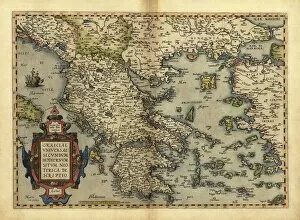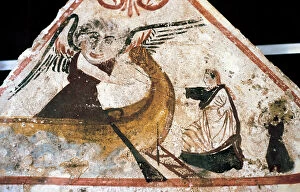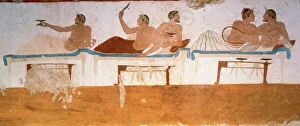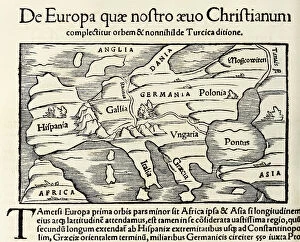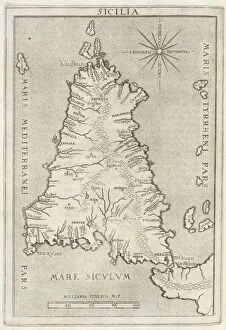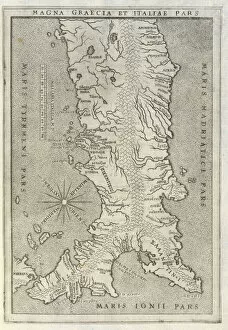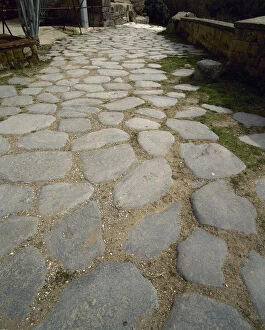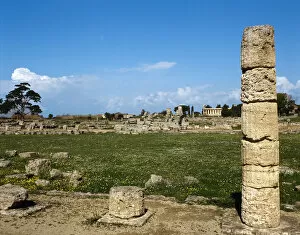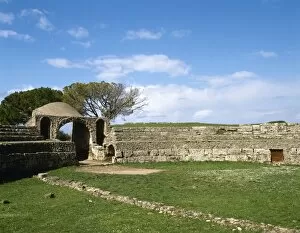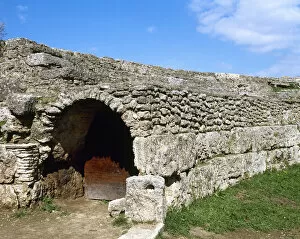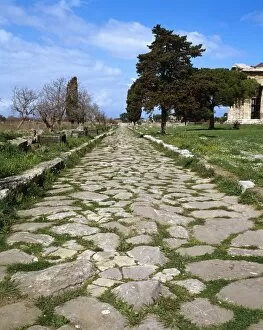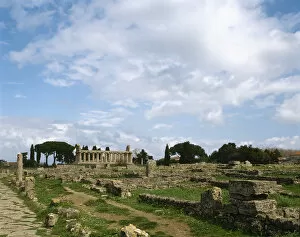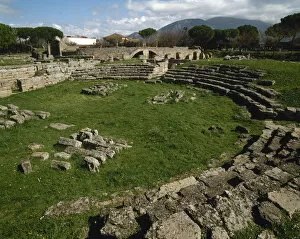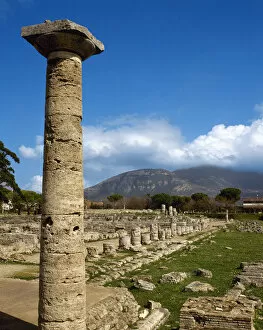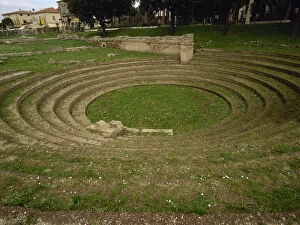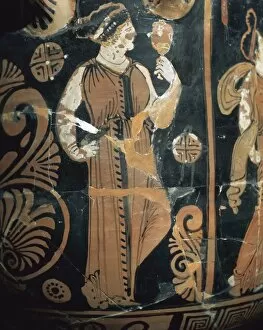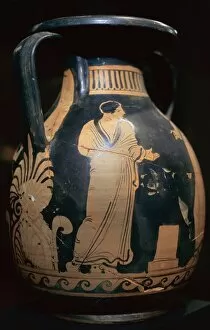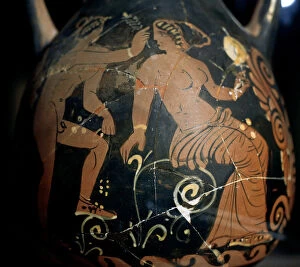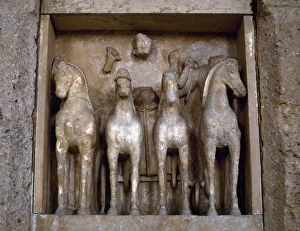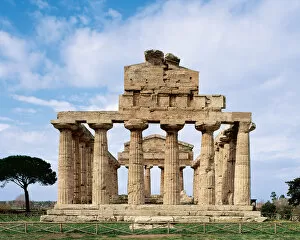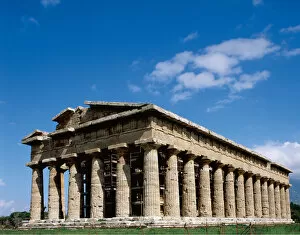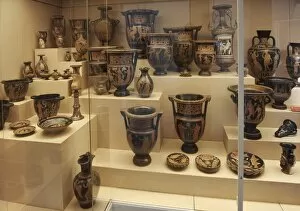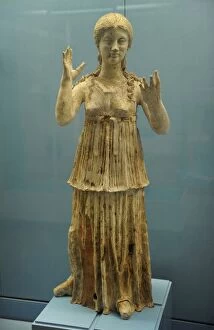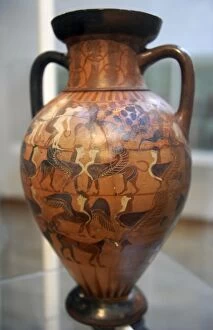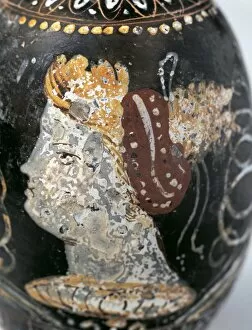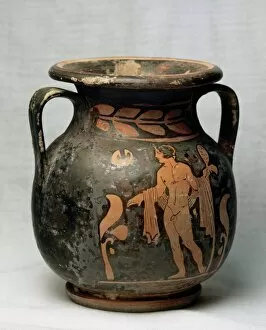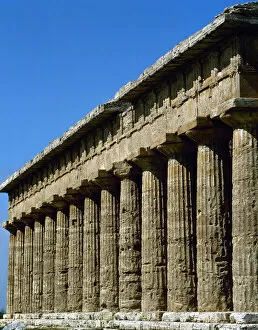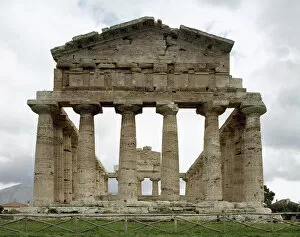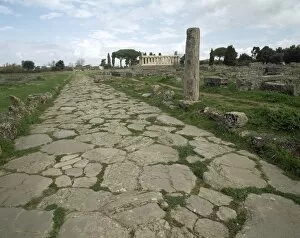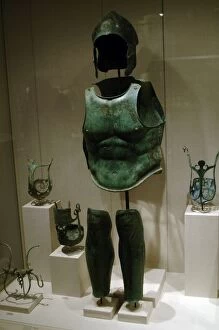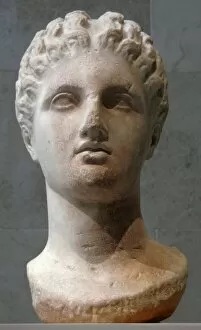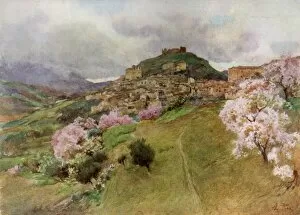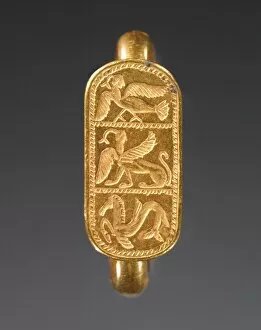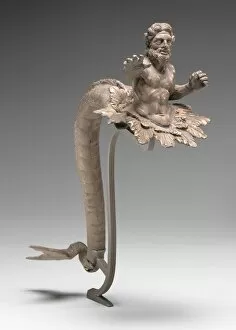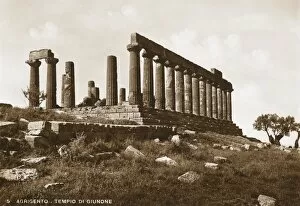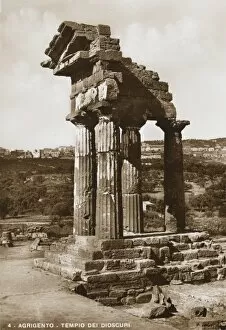Graecia Collection
"Exploring the Rich Heritage of Graecia: A Journey through Time and Culture" Step back in time with Orteliuss map of Greece from 1570
For sale as Licensed Images
Choose your image, Select your licence and Download the media
"Exploring the Rich Heritage of Graecia: A Journey through Time and Culture" Step back in time with Orteliuss map of Greece from 1570, as we embark on a captivating journey through the ancient land of Graecia. From the 4th century BC Acheron mentioned in Virgil's Aeneid to allegorical Greek art, every corner reveals fascinating stories. Immerse yourself in the exquisite beauty of Greek art at the Tomb of the Diver dating back to the 5th century BC. Experience intellectual enlightenment at a Symposium, where great minds gathered for philosophical discussions. Discover De Europa, quae nostro aeuo Christianum - an intriguing map depicting Christian Europe during its era. Marvel at the Archaeological Site of Cumae, a Greek colony nestled in Italy that holds sacred remnants from centuries past. Travel further into Campania's Southern Italy and witness Paestum's Roman Forum ruins, transporting you to an era filled with grandeur and power. Stand before the majestic Roman Amphitheater gateway and let your imagination wander amidst its walls that once echoed with cheers and battles. Stroll along Paestum's Sacred Way, feeling connected to ancient rituals and traditions. Gaze upon the awe-inspiring Temple of Athena or Ceres standing tall as a testament to Graecia's architectural prowess. As you explore Paestum's Roman Amphitheater ruins, let history whisper tales of gladiators' valorous fights within these very walls. Finally, lose yourself amidst Campania's Southern Italy landscapes adorned with remnants reminding us all about Graecia’s enduring legacy. Join us on this unforgettable expedition through time as we unravel Graecia’s captivating past – an enchanting blend of mythologies, cultures, and architectural marvels that continue to inspire generations today.

